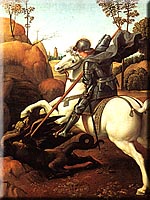A Game Design for the Internet of Today
By
Randy Chase
Evolution and Change:
Considering the incredible number of
talented people and the combined technological resources represented, the game industry
traditionally has been very slow to react to change.
For example, when games moved
from floppy disks to CD's, it took several years for the industry  to begin adapting and innovating new design concepts to take
advantage of this technology.
For the first couple of years, it was assumed that
CD's just meant that games could include more graphics and bigger sound files. to begin adapting and innovating new design concepts to take
advantage of this technology.
For the first couple of years, it was assumed that
CD's just meant that games could include more graphics and bigger sound files.
This reliance on the "more is better" school of game design has led to what I
personally consider to be a major problem in the gaming community.
The reality is
that if you strip away the multimedia glitz, 3D graphics and the video footage, the state
of the industry is not very good.
Games, for the most part, were much better
designed in 1984 than they are today.
Back in the industry's dark ages, when every byte of code and pixel of graphics had to be
justified, every step of the process had to be carefully weighed in terms of game design
and over-all playing value.
Too often today, designers that never went through that
arduous process are willing to rely on special effects and visual impact without taking
the time to first begin with a fundamentally sound game concept.
Whether I have succeeded or failed in this effort remains to be seen; but I have at
least made a serious attempt to step back and re-examine what we've done in the past and
ponder what we might do in the future. In the process, I hope that I have at least
started to explore the possibilities of game design that rely solely on the Internet
without any reliance on the traditional retail design and  business model. business model.
Bandwidth Requirements:
As Internet access speeds increase
significantly for the average home computerists, bandwidth-intensive on-line games will become
more attractive.
The present day reality, however, for the vast majority of Internet
users is that typical slow (modem-based) Internet access is only marginally adequate for
many of the graphics-intensive game designs being offered on-line.
At times it would seem, however, that many designers forget that people who aren't working
in the industry seldom have access to T1 lines, or even DSL access.
When I began this project, one of my goals was to develop a game that could be played by
anyone with a 14.4 modem.
Obviously the initial download required to install the
game is going to test one's patience at a slow connection and transfer rate.
But
once the game is installed, you should find that the quality of the playing experience
isn't dependant upon the speed of your modem.
Game Completion Statistics:
This is something that no one seems to
want to talk about.
What percentage of on-line games are actually completed?
And for multi-player games, how many of the players make it to the end of the game?
 Too many games require major investments of a
player's time.
There are obviously people who can devote several hours to attempting
to complete an on-line game.
But there are also many of us who also have normal
(i.e. off-line) lives that require tending from time to time.
One of
my goals was to design
a game that could be played in a relatively short period of time (under 1/2 an hour). Too many games require major investments of a
player's time.
There are obviously people who can devote several hours to attempting
to complete an on-line game.
But there are also many of us who also have normal
(i.e. off-line) lives that require tending from time to time.
One of
my goals was to design
a game that could be played in a relatively short period of time (under 1/2 an hour).
This not only accommodates the person with less time to spend, but it also significantly
increases the odds that the two players in a game will be able to maintain their Internet
connections long enough to complete a game.
AI & Limitations in Design:
For years, AI has been an integral part
of game design and development.
 Without computer
opponents, it simply wasn't practical for most people to play games.
However, the AI
requirements have been a limiting filter on the industry in terms of advancing game design
and complexity. Without computer
opponents, it simply wasn't practical for most people to play games.
However, the AI
requirements have been a limiting filter on the industry in terms of advancing game design
and complexity.
Users complain that computer opponents are either too stupid to offer a human player a
real challenge or that the developer allows the computer player to cheat.
The
reality is that real high-quality AI requires more time and money than most game
development budgets can accommodate.
So in the end, the developer either limits
features to simplify the AI or includes cheats to make the computer players competitive.
The reality is that even a stupid human is a far more challenging opponent than the best
computer player.
(After all, stupid players will sometimes do the most unexpected
and unpredictable things in a game!)
I began SpiritWars with the initial assumption that I was going to develop a game to be played by
human beings against other human beings.
Knowing that I would not be required to
create computer opponents provided a refreshing freedom that I haven't enjoyed in
my
earlier projects.
|
to begin adapting and innovating new design concepts to take advantage of this technology. For the first couple of years, it was assumed that CD's just meant that games could include more graphics and bigger sound files.
business model.
Too many games require major investments of a player's time. There are obviously people who can devote several hours to attempting to complete an on-line game. But there are also many of us who also have normal (i.e. off-line) lives that require tending from time to time. One of my goals was to design a game that could be played in a relatively short period of time (under 1/2 an hour).
Without computer opponents, it simply wasn't practical for most people to play games. However, the AI requirements have been a limiting filter on the industry in terms of advancing game design and complexity.